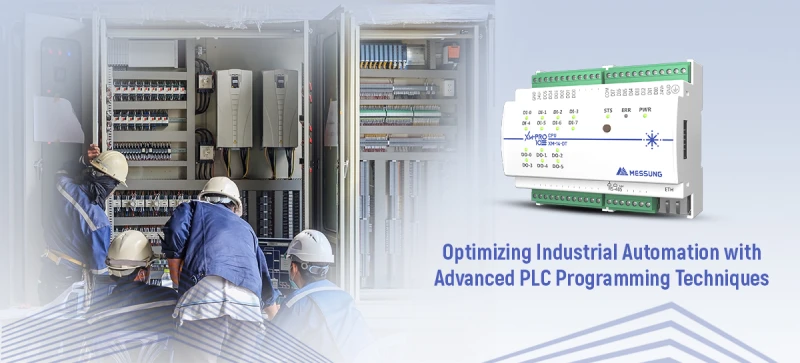
Modern industries need solutions better and faster to keep pace with the rapidly evolving technological landscape. Engineers are faced with challenges like shorter development time with higher quality. Add to it flexibility and intuitive control. There is a high demand for code reusability as well. Existing technologies and programming techniques fall short of these requirements. For effective coding and rapid product enhancement, new approaches are crucial.
Programmable Logic Controllers are ahead in the game because they can be optimized for peak efficiency with advanced programming techniques. By leveraging modernized codes and strategies, businesses can unlock new levels of advancement in their automation control and factory operations. Let us deep dive into advancements in PLCs and how they can turn the tables for PLC utilization and applications.
PLC and industrial automation
Before the Programmable Logic Controller (PLC) was invented, automotive manufacturing companies relied on control, sequencing and safety interlock logic for manufacturing assembly lines. The time-taking closed-loop controllers caused delays and were far from being failsafe. Each time an issue arose, engineers would have to find where the problem lies in order to fix it. Troubleshooting was a manual and expensive affair.A PLC revolutionized industrial environments with its ability to control applications with a wide variety of complexity. It is a digital computer specially designed to withstand harsh conditions of industry conditions and enable factory automation and control industrial processes. From simple functions to chemical processing in plants, PLC is widely accepted in several industries.
Evolution in PLCs
PLCs have become the backbone of industrial automation. However, the true potential of PLCs lies in their flexibility to adapt to new technologies and advancements. Ever since their invention, PLCs have undergone positive changes that have streamlined processes, smoothened creases and enhanced precision in machinery operations.
Modern PLCs offer even more features which function to orchestrate your businesses in new and effective manners by undertaking complex tasks, connecting systems and making automation highly efficient.
State-of-the-art PLC programming
Engineers have to skill up constantly and adapt to newer ways of achieving efficiency. Advanced PLC programming enables programmers to harness the full power of Programmable Logic Controllers. Here are some cutting-edge technologies that promise to introduce a new sharpness to PLCs.
Structured programming
As more and more complex tasks are developed, engineers turn to the basic principles of PLC programming which is structured programming. The structured approach allows programmers to break down long and complex tasks into shorter segments. These segments are coded easily and strung together to perform complicated actions.
Structured programming techniques include ladder logic, function blocks and structured text which can help divide code into manageable segments that are easier to understand, maintain and execute. Another advantage is minimized errors, flexibility and scalability. Troubleshooting errors is far easier because corrections can be made in a smaller segment.
State-based control
Advanced PLC programming also implements state-based control. This novel programming technique is more dynamic and flexible. Straying away from traditional sequential programming that relies on sequential logic, state-based control allows PLCs to run based on the current state of the system. This allows for intuitive control where operations need not be executed in a predefined sequence and can change dynamically based on user needs.
When multiple states and transitions are included in the requirement, the sequential logic is often inadequate. Instead, engineers can define states, transitions and other situations for the program to respond according to atmospheric changes or alteration in real-time conditions.
Advanced algorithms
PLC programming can be integrated with mathematical algorithms and data processing capabilities to give it a competitive edge. Programmers input mathematical functions and data analytical capacities while development enabling the PLC to perform complex calculations, data analysis and statistical computations enhancing the overall performance of the industry it is equipped in.
Is your PLC advanced?
With so many new advances in technology coming up every day, it might be time to advance your PLC system. If your PLC provider is Messung, don’t worry about transforming your entire operations or providing training from scratch to your team. Our expert developers are skilled at adding enhancements to your current systems so that your systems are upgraded in a short time with a minimized transition period.
So what are you waiting for? Advance your PLC today and see your operations optimized manifold!
